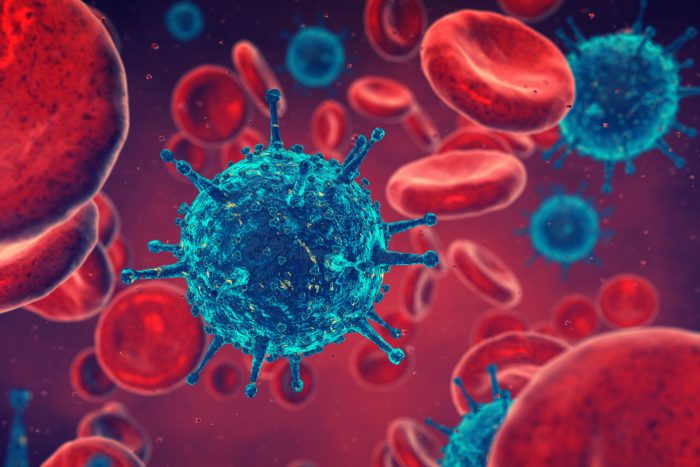
Human papillomavirus (HPV) is the most common sexually transmitted infection in the United States. Virtually all cases of cervical cancer – the fourth most common cancer among females worldwide – are caused by HPV. Less commonly, HPV can also cause vulvar, anal, and throat cancers. However, most women who have HPV do not develop cancer. In fact, only about 10 percent of women with HPV will eventually progress to cervical cancer. What explains why HPV leads to cancer in some people but not others?
The Type of HPV Matters
First, the type of HPV matters. There are over 200 different types of HPV in total, and more than 40 types that can infect the anal and genital area. Some, such as HPV 16 and 18, are considered high risk because they are the strains that cause cervical cancer. In fact, these two strains are responsible for 70 percent of cervical cancers. On the other hand, low risk types such as HPV 6 and 11 do not cause cancer. They can, however, cause other problems such as anogenital warts.
Immune System Plays a Major Role
Second, the duration of time that HPV persists in the body determines how likely it is to cause cancer. The longer that HPV stays active in a person’s epithelial cells, the more time it possesses to cause cellular changes leading to cancer. A person’s immune system plays a critical role in clearing HPV from the body, such that healthy people who have strong immune systems usually do not develop cancer from HPV. In fact, over 50 percent of new HPV infections are cleared in 6 to 18 months, and up to 90 percent of infections are cleared in 2 to 5 years. In young patients, the average duration of an HPV infection is about 12 months. However, people with weakened immune systems may not effectively eliminate HPV, allowing the virus to remain in epithelial cells and thus continue to replicate and damage cells.
To better understand this, consider the different pathways that HPV can take when it infects the body.
First, HPV can remain in a latent or dormant state. In this state, viral particles are detectable on a DNA test, but the virus does not cause any symptoms and is not detectable on a Pap smear or a cervical biopsy. HPV can remain latent for months to years without significance, and eventually become undetectable altogether once it is cleared permanently by the immune system.
Second, HPV can begin to replicate within host cells, leading to abnormalities called dysplasia. These are usually detected 2 to 8 months after the initial infection and are called “low-grade squamous intraepithelial lesions (LSIL)” on a Pap smear or “cervical intraepithelial neoplasia 1 (CIN 1)” on a cervical biopsy. These lesions usually do not cause symptoms and most resolve without treatment.
Finally, HPV can integrate into the host DNA, causing more severe cellular changes called “high-grade squamous intraepithelial lesions (HSIL)” or “cervical intraepithelial neoplasia 2 or 3 (CIN 2 or CIN 3)”. HSIL and CIN 2 or CIN 3 are more likely to be caused by high-risk HPV types (e.g., HPV 16 and 18) and are more likely to develop into precancer and eventually cervical cancer. However, they can also remit. In one study of patients 13 to 24 years of age with CIN 2, 68 percent of patients had regression of their lesion within 3 years.
Factors That Determine if HPV Turns Cancerous
Several factors that impact the immune system can affect whether HPV remains latent, replicates within host cells, or integrates into the host DNA, as well as whether the virus is cleared at any point along these pathways. Normally, the immune system responds to HPV infection by mounting both an innate response consisting of cells called macrophages and dendritic cells as well as an adaptive immune response consisting of T-cells and B-cells. Together, these cells destroy either the HPV virus directly or cells infected by HPV so that they cannot continue to replicate. The immune system also creates memory cells which remain in the body and combat future HPV infections. Key factors that weaken the immune system at any or all these levels and make the body less likely to clear the infection include:
- Older age. Research shows that in persons 55 years of age or older, 50 percent of high-risk HPV types will persist compared to 20 percent in patients under age 25.
- Human immunodeficiency virus (HIV). HIV specifically decreases CD4 T-cells involved in the adaptive immune system. HIV also produces a protein that enhances the expression of HPV proteins called E6 and E7 that cause cancer. Additionally, HIV disrupts the integrity of epithelial cells, making it easier for HPV to infect these cells. All these mechanisms increase the risk of HPV progressing to precancer or cancer. In fact, cervical cancer is one of the most common cancers related to HIV.
- Immunosuppressive therapies. Many medical conditions such as cancer, autoimmune disorders, or organ transplantation require long-term medications that weaken the immune system, predisposing to HPV progression.
- Research has shown that smoking has a synergistic effect with HPV infection in the development of cervical cancer. In other words, the combination of smoking and HPV infection dramatically increases the risk of cervical cancer compared to either risk factor alone. Besides suppressing the immune system, cigarette smoke also contains nicotine and breakdown products that can cause cancerous changes on their own.
- Co-infection with other sexually transmitted infections. It is unclear if the presence of other sexually transmitted infections such as herpes simplex virus and chlamydia simply occurs alongside HPV, but there is evidence that these infections can weaken the immune system and facilitate HPV progression.
Finally, other factors unrelated to the immune system can also contribute to the likelihood that HPV will progress to cervical cancer. Patients who engage in more sexual activity – which includes riskier sexual activity or sexual activity with a greater number of lifetime partners – are more likely to have persistent infections. Though poorly understood, patients who take long-term oral contraceptive pills may also be at increased risk.
Sources:
- Palefsky, JM. Human papillomavirus infections: Epidemiology and disease associations. In: UpToDate, Post, TW (Ed), UpToDate, Waltham, MA, 2023. (Accessed on September 27, 2023).
- Palefsky, JM. Virology of human papillomavirus infections and the link to cancer. In: UpToDate, Post, TW (Ed), UpToDate, Waltham, MA, 2023. (Accessed on September 27, 2023).
- Wright, JD. Cervical intraepithelial neoplasia: Terminology, incidence, pathogenesis, and prevention. In: UpToDate, Post, TW (Ed), UpToDate, Waltham, MA, 2023. (Accessed on September 27, 2023).






